How and what to cover strawberries for the winter?
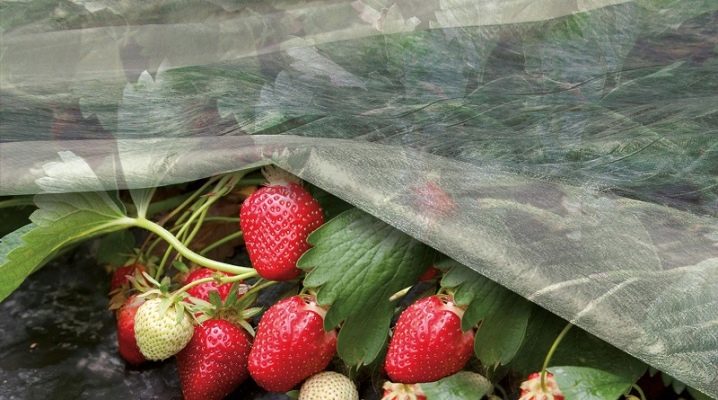
In almost the entire expanse of our country, summer residents love to grow such garden berries as strawberries on their plots. In order to get a good harvest on time, this plant needs proper care.
In addition to choosing a site with good soil, timely watering and fertilizing, you need to know how and when to cover strawberries so that the plant will survive the winter and bear fruit well next year.


The need for shelter
This plant is quite frost-resistant. But there are several reasons why you need to cover your garden strawberries for the winter.
- To save her from unexpected frost. There is sometimes a thaw during the winter, and strawberries can mistake it for the beginning of spring and sprout, and later die from the frost that will come. To prevent such events, you need to insulate the strawberries.
- For shelter from strong winds, this plant loves to grow in well-lit areas hidden from the wind. And with strong currents of cold air, the plant can die, even at not too low temperatures.
- To protect the root system from freezing in cold, snowless winters. When there is not enough snow cover, the roots are exposed and become easily accessible to low temperatures. This is detrimental to the plant.

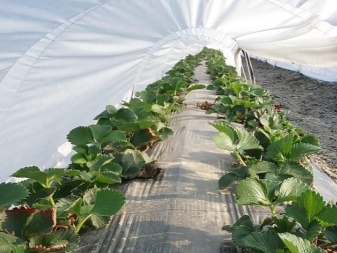
Timing
It is best to cover the strawberries when it is cool enough, but the first frost has not yet come. Early shelter can lead to the debate of the leaves of the plant, and later - to freezing. When a strawberry begins to prepare for wintering, it can be seen in its appearance. Last year's old leaves turn brown, and young shoots begin to wither and turn gray a little. During this period, you can begin to shelter the plant.
It is important to wait for the start of the shelter until the temperature has approximately equalized... It can be a small minus or 0 degrees. Before the shelter, it is imperative to sanitize the plant, remove dead and diseased leaves, and also loosen the ground between the bushes and get rid of weeds.
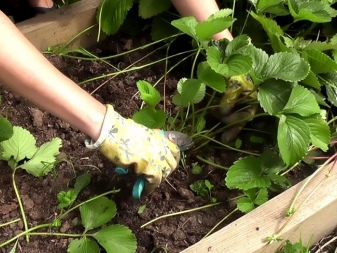
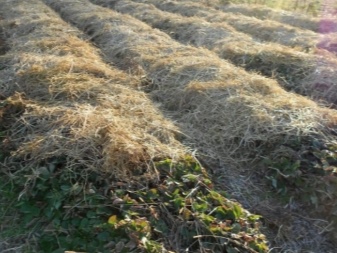
Shelter times differ in different regions.
- There are very frosty winters in the Moscow region. It is recommended to cover strawberries in late October to early November. For this region, straw and tops are not suitable as a material for insulation, as they attract uninvited guests to the territory, in particular, rodents. It is better to use either a specially made material for this, for example, agrotex, or spruce branches. It is difficult to find in large quantities, but it is ideal as insulation.
- To the north of our country, in the Leningrad region, beds should be built on a hill due to the close location of groundwater to the earth's surface... Strawberries really dislike such conditions in the soil. It is always planted in areas where groundwater is located very deep from the surface.
- All covering work is recommended to be carried out no later than October... Structures on frames made of special non-woven materials, or a mixture of peat with sawdust, which is covered with spruce branches, is used as a material for insulation.
- Siberia has a very cold climate... In winter, the thermometer can drop to -45 C. But there is also a plus of this climate, there are very heavy snowfalls.But, unfortunately, one snow cover, even such a large one, is not enough for shelter in this temperature regime. Here they use needles or spruce branches as insulation for strawberries. The frame method of insulation also prevails. A wooden panel support (frame) is erected, which is covered with a special insulation.
- In Transbaikalia, on the contrary, snowfall is very scarce and strong icy winds prevail. There is also a sharp temperature drop from -15 to -38 C. Sometimes frosts reach -50 C. All covering work is carried out in September. With the first frosts at the very beginning of autumn, a material such as spunbond is used. They cover the plants from above until a thorough insulation is ready by the end of the month. As the main shelter, a lined frame is used, covered with non-woven material, which is stretched in several layers. Be sure to leave an air gap for greater heat retention. Even this practice takes place. The bushes are dug up for the winter and transferred for storage, for example, to the basement until next year.
- In the Amur Region, in the Khabarovsk Territory, there are large temperature drops... In summer, it is hot here up to 36C, and in winter frosts down to -45C. Frosts can begin as early as early September, so all covering work should be carried out no later than early autumn. Here summer residents use a mixture of leaves and stems of cultivated plants, as well as a special material agrotex or geotextile.
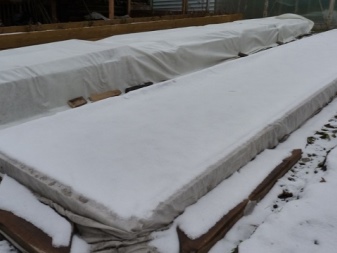
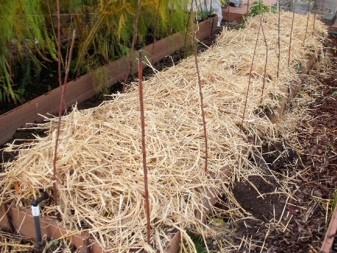
What cover to use?
To insulate strawberries, various covering materials are used - specialized, industrially produced, and natural. The choice of this or that method depends on various factors: terrain, weather conditions and the variety of strawberries.
To decide which shelter to use, you need to familiarize yourself with their features of use.
- Lapnik... A versatile and very easy to use natural material. It has one drawback - it is difficult to find it in large quantities. Resistant to wind, does not spread around the site. Has a persistent aroma that repels pests, and also does not lose shape.
- Straw... It rescues well from a large number of weeds, and also keeps the soil loose. It goes well with spruce branches, if you first cover the soil with straw around the bushes, and then on top with several branches of spruce branches. Its disadvantage is that it can lure rodents. But it has several distinctive features that have a very positive effect on its choice as a covering material. The straw has a unique composition that has a beneficial effect on the soil, and also protects the roots of the plant from the appearance of rot.
- Sawdust... They are very widely used in garden plots of summer cottages. They are easy to use, suitable as a shelter for many plants, as well as for several other purposes. For example, weeds practically do not grow under them. Therefore, they are well suited for use as a means to help prevent overgrowth of weeds. They tend to slightly acidify the soil. Therefore, it is recommended to use wood ash in the complex to neutralize the acidity of the soil. You can cover with sawdust not only the beds and plants, but also the passages between them.
- Leaves... Fallen leaves are used as a covering material. The advantages of this method of insulation are that it is free, and in the fall there are usually an abundance of them on the site. It must be borne in mind that the foliage must be from healthy trees. To prevent exposure of plants due to the wind, which carries leaves across the territory, you can also use spruce branches in the shelter. It will keep the leaves where they are needed.
- Marigold... These flowers are planted in the garden bed between the rows of strawberries. They tend to scare off various harmful insects. They do not lose this feature even after they are cut and dried.Therefore, they can be a very good shelter for berry bushes in winter, performing a double function - insulation and pest control.
- Agrofiber... In addition to natural materials, there are various specialized materials. Agrofibre has a fabric structure, consists of fibers, it can be of different density, use the one that is more suitable depending on the climate. Due to its structure, it does not accumulate moisture and does not form condensation. Provides good air exchange. Environmentally friendly, it contains polypropylene without hazardous chemical compounds. The undoubted advantage is its durability and long service life - up to 4 years. But it is not suitable for use in climates with thaws, as melted snow will flow through it, and then this moisture will freeze, which will lead to icing of the plants and their subsequent death. Agrofibre is best used in an area with a temperature regime without surges, where unexpected thaws do not occur.
- Spunbond... It is woven from very thin threads; it contains no harmful chemical compounds or elements. Due to its dense weave, it does not allow moisture to pass through. Not subject to mold formation. It is widely used for covering various types of plants. It has low UV resistance, but since it is used in winter, it doesn't really matter.
- Film... The most popular and budgetary option for covering materials. Very resistant to wear and tear, does not allow moisture to pass through, therefore protects plants from icing. Provides protection from the wind, and inside creates a greenhouse in which heat is retained.
Some summer residents even use plastic bottles to insulate strawberry bushes. They cut off the bottom for them and dig them into the ground, covering the plant from above. The gardeners themselves are determined with the material for insulation, depending on the characteristics and ease of use in a particular climate.
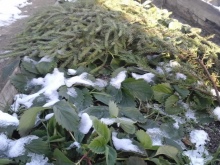
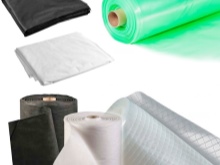
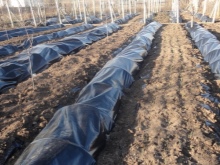
How to properly cover strawberries?
When warming plants, many conditions are taken into account: the age of the strawberries, the time of planting in the ground, the method of planting and some others. These features of the shelter are suitable not only for strawberries, but also for strawberries.
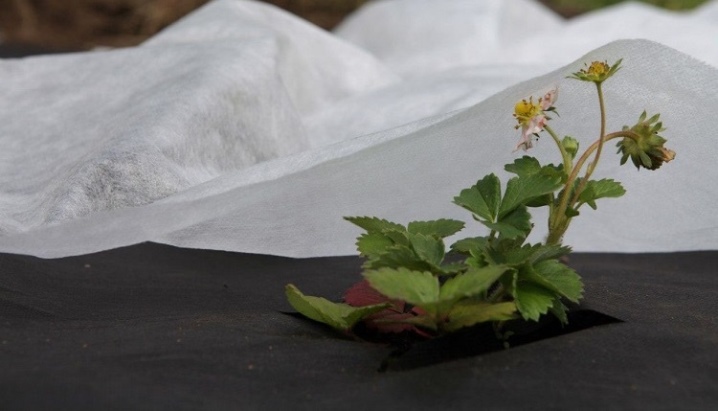
Adult
Plants that are already several years old are strong and vigorous enough to survive well over winter. They only need a little help. The main thing in covering adult bushes is strict adherence to deadlines. The main goal in this skincare procedure is to prevent the main point of growth from dying. It must be covered.
If strawberries are grown in an area where there is sufficient snowfall, then a solid shelter is not required. Plants are only slightly covered, and this is enough for them to comfortably overwinter and not freeze out.
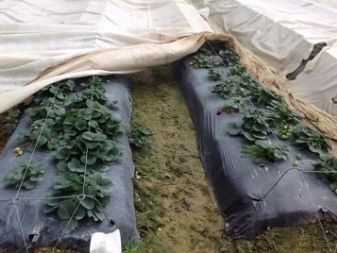
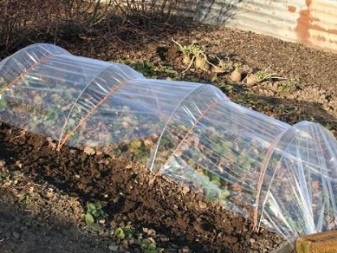
Planted in autumn
Some strawberry varieties need to be planted in the ground not in spring, but in autumn, and they need additional shelter in order to endure the cold for the first time. These types of strawberries include the "Victoria" variety.
Plants planted at this time of the year are covered with sawdust, straw, or dry plants such as marigolds. This is necessary to help the plant survive the winter and not freeze out, especially its root system, which is still quite vulnerable, requires it. Moreover, you should cover the plants if the winter in the growing area is snowless or there is snow, but it is not enough.
In the spring, after wintering, the strawberries are opened, some of the covering material is removed, and what remains serves as fertilizer for the bushes.
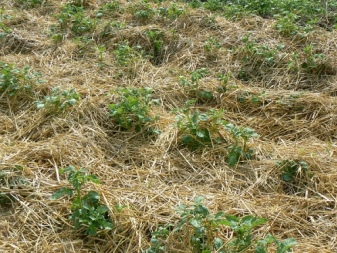
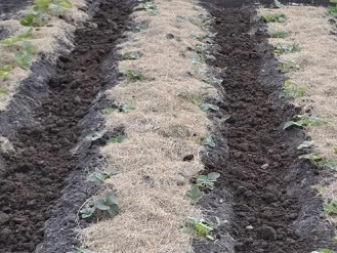
Young
Young plants are not yet sufficiently strong for wintering without additional covering manipulations... A mixed method of shelter is well suited for their insulation. First, you need to cover the plants with sawdust or straw, and then you need to cover the top with a frame, on which several layers of special non-woven material are stretched. For example, spunbond or lutrasil.
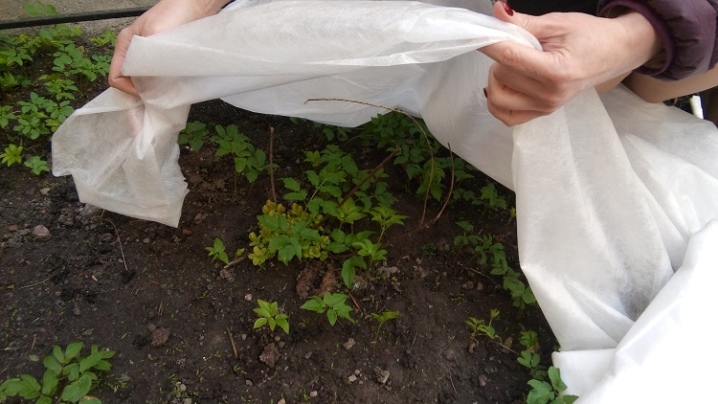
In the pyramid
In such an interesting way, like a pyramid, strawberries are grown mainly in southern regions with a warm climate, where shelter is not required. In other areas, there is usually enough snow cover for wintering plants. To create a larger layer of snow, it is shoveled onto the pyramid with a shovel. Structures above 60 cm in height are covered with additional special covering material in several layers.
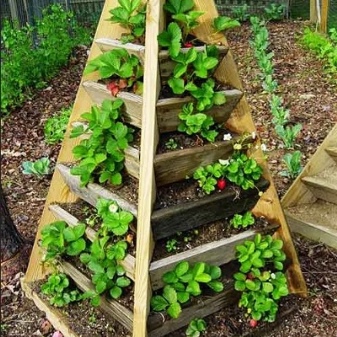
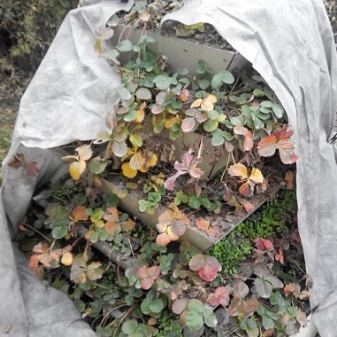
Useful Tips
Summer residents who have long been engaged in the cultivation of various varieties of this berry, offer to pay attention to some subtleties in the shelter and advise you to use some recommendations.
- If pests such as rodents live in your garden area, then you need to cover the plants with mulch, so as not to attract their additional attention and save the bushes and crops from attacks. In advance, take care of the establishment of scarers working on the principle of ultrasound. This advice will help you avoid unnecessary losses. And you can safely use the material for the shelter, which in other conditions would be impossible to insulate the strawberries.
- In order to preserve the root system even with a severe decrease in temperature, before the onset of frost, the soil in which the strawberries grow must be abundantly moistened with water.
- When warming with spruce branches, it is necessary to distribute it very evenly, since it is quite difficult to get it in large quantities. A standard garden bed requires about 10 spruce branches.
- If you prefer foliage shelter, oak, maple, horse chestnut, and walnut are the best options. Their leaves take longer to decompose than other tree species.
Having considered various materials for a shelter, the influence of climatic conditions and the dependence of the choice of insulation on the age of plants, we can say that all materials have their pros and cons.
You need to choose exactly the one that suits a particular variety, depending on the growing conditions. The quality and volume of the future harvest depends on the correct choice.
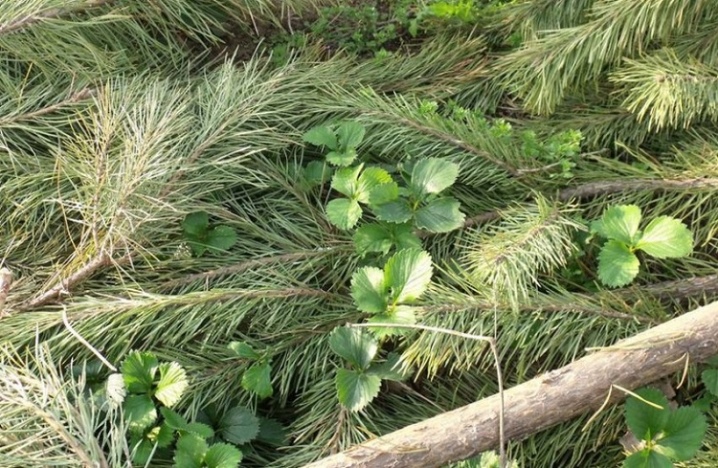













The comment was sent successfully.